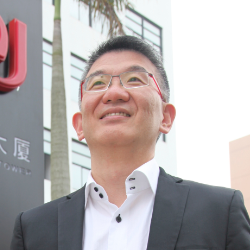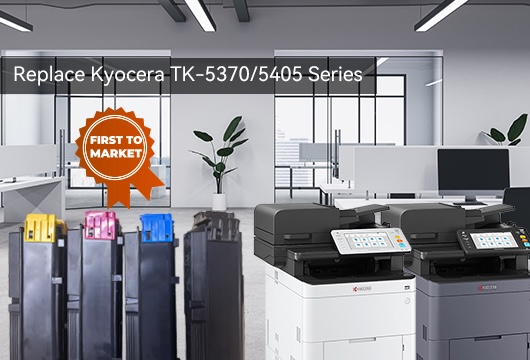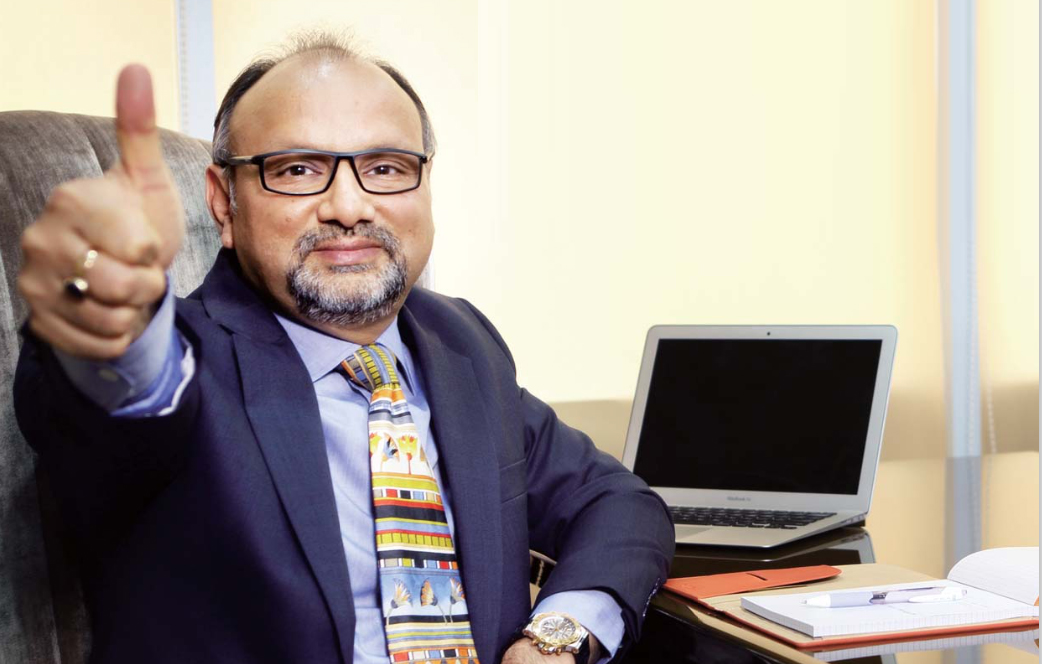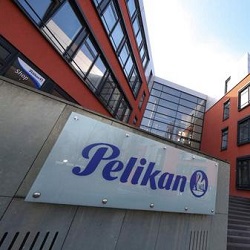Still a Mile Ahead

Still a Mile Ahead
Print-Rite’s Arnald Ho Sets the Pace while others try keeping up
David Gibbons, Director, Recycling Times Media
——————————————————————————————————————————————————————————————————————————————————————————————
Dedication
What you were doing when you were 23?
Arnald Ho was dreaming of becoming an industry entrepreneur and was convincing family and friends to loan him the HK$100,000 (US$13,000) he needed to get started. At the time—35 years ago—the print consumables industry was all about ribbons. Inkjet and laser were still around the corner. Ho could see that China had the resources—the people and the technology—to successfully beat any of the best ribbon manufacturers in the world.
“It’s all about gut feeling. That’s what gets an entrepreneur started,” Ho explains. “If you want to be successful, you have to be dedicated to that vision.” It’s a message he would repeat many times, and the first core ingredient for his staying a mile ahead.
Ho set up his first printer ribbon factory, Tian Wei (the Chinese pronunciation of Print-Rite) in rented premises with two technicians and 15 staff. Ho organized a business tour to Europe and the US to look for business partners and opportunities. He studied the world’s ribbon makers and concluded that, from nation to nation, all the manufacturing processes for dot matrix printer ribbons were the same. “But I did notice something different: their workers’ fingers were just too big to put the ribbon into the cartridge quickly, that’s when I realized their efficiency must be much lower than that of our workers in China.”
The opening of China and the setting up of Zhuhai as a Special Economic Zone 35 years ago coincided with Ho’s own business plans. “We were lucky to be starting at the same time, and China’s open door policies are one reason for our success. My little company was the first to make printer ribbons in China and we still make ribbons for dot matrix printers today.”
Ho was also the first to produce Aftermarket inkjet cartridges in China. Then, in 1996, Print-Rite was also the first to remanufacture laser cartridges there. The Aftermarket is tougher and Ho says. “It’s going through a phase where successful companies—the ones that are truly dedicated—show their real capabilities.”
Change
Ho says change is very important to the DNA of a company—the second core ingredient for his staying a mile ahead. “You have to be constantly prepared to change. We moved from ribbons to inkjet, to laser, to 3D printing. He says well known imaging companies have disappeared because they could not keep up with change.
I asked Ho about the tough decisions he has made over the last 35 years. He quickly responds. “This is what I am talking about—change. All the tough decisions I have had to make are about change,” he repeats. “In the early days I started out as a trader, but I had to decide whether to move into manufacturing the components myself.” Ho explains he had no idea about how to run a factory at the time. Fortunately he found good partners to help him change his business model in order to stay ahead.
“Another time was over the first lawsuit we faced with Epson in 2000,” he recounts. He had to choose between settling quietly with Epson, or fighting and learning more about the secrets of patent law. “It was a costly and time consuming decision,” Ho remembers. “But we learnt a lot!”
Ho knew patents were important even before Print-Rite’s lawsuit with Epson. Print-Rite’s first patent was for a filling system for inkjet cartridges. “It was 1996,” Ho remembers. “The inventor of that technology is still here in the company.” At that time there was no patent guidance available. “After our first lawsuit with Epson, we learned very quickly about intellectual property and how the legal system works. We then realized we needed to protect our own technologies and designs”. To get the culture in place within the company, Ho encouraged his team to register as many patents as possible. “Once the culture was truly established, around 2006, we then focused on developing higher quality patents.” The company now owns more than 2,400 registered patents of its own—more than any other Aftermarket company.
“You have to respect the intellectual property of OEMs. You must not infringe!” Ho warns. “You must invest millions into re-engineering, designing, and endless research if you want to sell non-infringing products.” Ho says he has often been asked, but will never build, sell or promote cartridges that infringe an OEM patent.
Ho raises a finger. “Of course, the OEMs must learn to respect the intellectual property of the aftermarket too. It works both ways.”
Print-Rite’s more recent patents are related to its 3D printer technology. “Did you know Print-Rite owns as many 3D patents as Hewlett-Packard?” Ho asks me. He adds that the company’s experience in ribbons, inkjet and laser has provided a good foundation and culture on which to build a successful 3D printing business.
Differentiation
Ho says that in order to compete, you must find some advantage over everyone else. Differentiation is the third core ingredient for his staying a mile ahead. “If you assemble only, you are competing with 80% or 90% of the industry,” Ho explains.
Thirty-five years ago the ribbon industry was divided into three sectors: those who made the moldings, those who manufactured the plastic (empty kits), and those who finished the product with the ribbon intact. “We were among the first companies in the world to combine these three processes into the one company.”
Ho moved this integrated model across to his new inkjet cartridge business. Having already mastered inkjet ink production, and the plastic inkjet moldings and casings, Print-Rite was the first to develop Aftermarket chips in 2003 for use in Epson inkjet cartridges.
Print-Rite was also the first company to remanufacture laser cartridges in China in 1996. Using the same integration model in 2003, Ho then opened his own Zhuhai-based ICMI (China) toner production factory. In 2010, he acquired the AEG Photoconductor Shanghai drum plant, thus providing Print-Rite control of all the costs and quality in his laser business.
Ho reminds me that ribbon, inkjet and laser technologies are dedicated to placing pictures, words and graphics onto a piece of paper. “There is not much room for these technologies to change. But 3D printing allows you to create your ideas. 3D printers do not have the constraints—they have more potential than their 2D counterparts. They can create bone and human tissue, be used in space exploration, fashion, engineering, construction and education. And more.” Ho believes those who can control applications and materials, will have a good 3D printing solution. “The printers are not so important. But how you apply the printer into any specific application is where success will be seen.”
With more than 60% of the global Aftermarket print supplies being manufactured in Zhuhai China, Ho has been pushing for a collective trademark to be launched at RemaxWorld Expo in October. He says “Made in Zhuhai” should meet quality standards and have the endorsement of trade associations, compliance standards and testing centers—a point of differentiation for those looking for quality Chinese products in the future.
I ask Ho if eCommerce might be another point of differentiation for Aftermarket print consumables companies. Ho smiles. “I’m quite sure the horse enthusiasts all scoffed when the first motor cars arrived. As did the candlestick makers when the first electric light bulbs were turned on. eCommerce has already changed the way we do business. If you did not board that boat, you have already been left behind.”
“You have to be dedicated to seeing your dreams fulfilled, be ahead of change. Differentiation is only one leg of the stool. That’s how I’ve been fortunate to stay a mile ahead.”
(Source: Edition 67, Recycling Times English Magazine )
You’re Welcome to Contact Us!
You can provide opinions and comments on this story!
Or you can send us your own story!
Please contact us, via editor@RTMWorld.com







Leave a Comment
Want to join the discussion?Feel free to contribute!